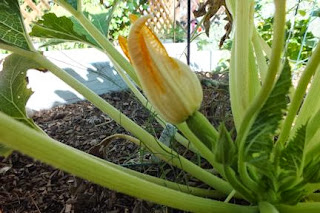In the last couple of weeks or so, it has rained quite a bit,
about four inches. Here in the valley of the sun, that's a considerable amount.
We have dust storms, windstorms, thunderstorms.
These are the monsoons. Monsoon season is upon us.
Right now, we are caught in this pseudo season, a mixture of
high temperatures and high humidity, followed by brief but intense storms of
various sort. The monsoons come during the last few agonizing weeks of summer,
a time of burning sunlight and thickened air, and of indoor activities.
 |
| Devil Grass |
No one I know keeps a full garden in the summertime. The
weather is either too hot or it's raining buckets. You keep your hardy
perennials alive, such as rosemary, but you would have harvested your veggies weeks
ago. This is our version of wintering over.
And some of the photos here are the equivalent of those images
of the beds in gardens west of the Rockies in the last cold days of winter, the
soil still half frozen. Here, though, in the valley of the sun, after four
inches of rain and brutally high temperatures, I have Devil Grass.
 |
| Tomatillo and Cayenne in a barrel |
Devil grass is Bermuda grass and it can't be killed, merely
subdued. It does not give in easily though, and I may have to, am likely to,
resort to chemical warfare. I could pull the grass by hand from the nooks and
crannies of my garden, but that doesn't really subdue the green devil as much
as it encourages it to try harder. So, chemical warfare it is.
Looking at What's Alive
Early in the year, I scattered seeds around the garden in a
free form fashion. The result was a wild hodgepodge of seedlings popping up,
and more than half of the
seedlings did mature to yield a fair amount of
veggies. The tomatoes did especially well. | |
| Empty space |
Soon, though, the hot weather will abate, and Phoenix
gardeners can
leave the confines of their air-conditioned homes and feel the
funky Phoenix soil in their fingers once again.
Thinking about a Remodel
Garden beds are my preferred method when soil gardening, but
the low beds do present some issues. The reason the Devil Grass is so prolific is
that the beds are watered nearly every day. The water feeds the grass roots, and
the walkways fill up with the stuff. As I say, it needs subduing.
 |
| Puppy with peppers in a barrel |
The second issue is my back. I have what is clinically
referred to as a bad back. Every year, it gets a little harder to kneel down
and get back up. So, we may be raising the beds.
We also have to consider how to provide shade for the garden
in the late spring and throughout the summer months. Those beds with perennials
or heat tolerant plants need protection. We need to find an efficient way to
add shade when needed and store the material away when it's not.
Starting Seeds
 |
| Hardy oregano |
Come the first of September, I'll start seeds for the soil garden.
It will be a fall garden, but here a fall garden is tomatoes, zucchini,
cucumber, squashes, carrots, and all manner of greens and herbs.
While gardeners in other parts of the world put their gardens
to bed, and spend winters in front of a cozy fire reading seed catalogues, I'll
be gardening.
And when summer comes around again, and the others are reaping
the rewards of what they have sown, I'll be in front of the air conditioning
vent, reading seed catalogues.










.JPG)





.JPG)
.JPG)
.JPG)